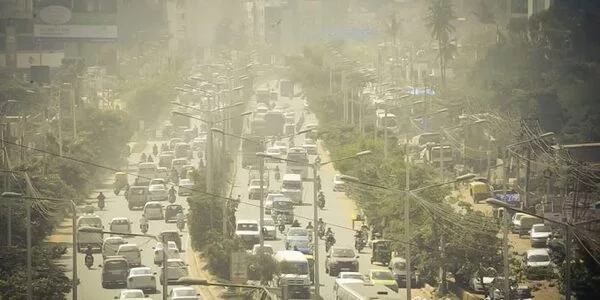According to a new study published today, nearly 2 million new cases of pediatric asthma each year may be caused by a traffic-related air pollutant, a problem that is especially prevalent in major cities around the world. This is the first study to estimate the number of pediatric asthma cases caused by this pollutant in over 13,000 cities ranging from Los Angeles to Mumbai.
“Our study discovered that nitrogen dioxide puts children at risk of developing asthma, and the problem is particularly acute in urban areas,” said Susan Anenberg, a co-lead author of the article and a professor of environmental and occupational health at George Washington University. “The findings suggest that clean air must be an important component of strategies to keep children healthy.”
Anenberg and her colleagues investigated ground concentrations of nitrogen dioxide, or NO2, a pollutant emitted by tailpipe vehicles, power plants, and industrial sites. They also tracked new cases of asthma in children from 2000 to 2019. Asthma is a chronic disease that causes inflammation of the airways in the lungs.
Our study discovered that nitrogen dioxide puts children at risk of developing asthma, and the problem is particularly acute in urban areas. The findings suggest that clean air must be an important component of strategies to keep children healthy.
Here are some key findings from the study:
- In 2019, an estimated 1.85 million new pediatric asthma cases were attributed to NO2 globally, with two-thirds occurring in urban areas.
- The proportion of pediatric asthma cases linked to NO2 in urban areas has recently decreased, owing to stricter clean air regulations implemented by higher-income countries such as the United States.
- Despite improvements in European and American air quality, dirty air, particularly NO2 pollution, has been increasing in South Asia, Sub-Saharan Africa, and the Middle East.
- Cases of pediatric asthma linked to NO2 pollution pose a significant public health burden in South Asia and Sub-Saharan Africa.
A previous study by the GW researchers found that NO2 was linked with about 13% of the global pediatric burden of asthma and up to 50% of the asthma cases in the most populated 250 cities worldwide.
According to research, air pollution can aggravate asthma symptoms. A study of young campers with moderate to severe asthma found that on high pollution summer days, they were 40% more likely to have acute asthma episodes than on days with average pollution levels. Another study discovered that when summer air pollution was high, older adults were more likely to visit the emergency room for breathing problems.

Overall, the fraction of pediatric asthma cases linked to NO2 declined from 20% in 2000 to 16% in 2019. That good news means that cleaner air in Europe and parts of the U.S. have resulted in big health benefits for children, especially those living in neighborhoods near busy roadways and industrial sites.
Fine particulate matter, or PM2.5, is a cocktail of microscopic particles found in air pollution. Because they are almost weightless, they can linger in the air for long periods of time, causing harm to humans who must inhale them on a regular basis. Particulate matter, which can be inhaled deep into the lungs, has been linked to asthma and death.
Much more needs to be done, both in higher income countries and in parts of the world still struggling to curb harmful emissions from vehicles and other sources of NO2, the researchers conclude.
According to a second study led by Veronica Southerland at GW, Anenberg, and their colleagues, urban air pollution is responsible for 1.8 million extra deaths in 2019. According to this modeling study, 86% of adults and children living in cities around the world are exposed to fine particulate matter levels that exceed World Health Organization guidelines.
“Reducing the use of fossil fuels in transportation can help children and adults breathe easier and may pay significant health dividends, such as fewer cases of pediatric asthma and excess deaths,” Anenberg said. “At the same time, it would lower greenhouse gas emissions, resulting in a healthier climate.”





